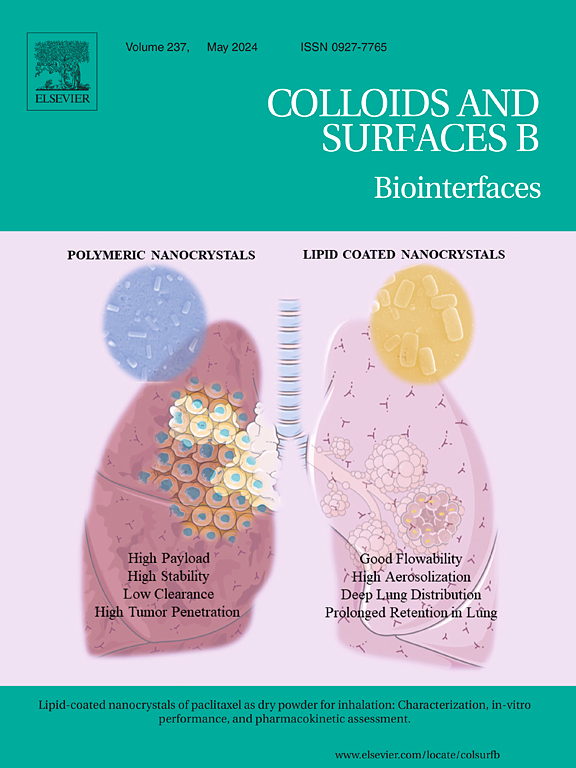Collagen-mediated in situ mineralization-enhanced biomimetic bone tissue engineering scaffolds
IF 5.4
2区 医学
Q1 BIOPHYSICS
引用次数: 0
Abstract
Oriented poly(lactic acid) (PLA) fiber bone tissue engineering scaffolds are often limited by factors including poor material hydrophilicity and weak osteogenic activity. The introduction of in situ mineralization can address these issues, but it requires the assistance of hydrophilic materials to achieve optimal performance. Collagen, a nature-based ECM component, was adopted because it can enhance hydrophilicity, encourage cell adhesion, and biomimetrically induce mineralization, according to recent studies of ECM-mimicking scaffolds. Therefore, this study proposes a collagen-mediated in situ mineralization-enhanced scaffold design aimed at improving the hydrophilicity and osteogenic potential of oriented fiber scaffolds. Collagen (5–10 wt%) and phosphate-containing solutions (59.6 mM) were added to a PLA matrix, and scaffolds were electrospun at 12 kV. Subsequently, the scaffolds underwent in situ mineralization in a calcium ion-containing solution (101 mM), leading to the formation of calcium phosphate within the scaffold structure. The experimental results show that the introduction of collagen effectively promoted the formation of in situ mineralization, enhanced the hydrophilicity of the scaffold, and maintained good fiber orientation. The scaffolds exhibited significant mechanical anisotropy, with the Young's modulus parallel to the fiber direction reaching 5 MPa, which is 25 times greater than that in the direction perpendicular to the fibers. In vitro studies with rat bone marrow mesenchymal stem cells showed a 2.4-fold increase in osteogenic differentiation, as assessed by alkaline phosphatase activity. Micro-CT analysis showed that the increase of BV/TV was 3.26 times higher when compared to that of control scaffolds, while histological analysis revealed mature bone tissue formation characterized by well-organized collagen fibers. Overall, the present study describes a novel strategy of collagen-mediated in situ mineralization, first integrating enhanced hydrophilicity, mechanical anisotropy, and biomimetic bone-like properties to address major limitations associated with the current oriented fiber scaffolds.
求助全文
约1分钟内获得全文
求助全文
来源期刊

Colloids and Surfaces B: Biointerfaces
生物-材料科学:生物材料
CiteScore
11.10
自引率
3.40%
发文量
730
审稿时长
42 days
期刊介绍:
Colloids and Surfaces B: Biointerfaces is an international journal devoted to fundamental and applied research on colloid and interfacial phenomena in relation to systems of biological origin, having particular relevance to the medical, pharmaceutical, biotechnological, food and cosmetic fields.
Submissions that: (1) deal solely with biological phenomena and do not describe the physico-chemical or colloid-chemical background and/or mechanism of the phenomena, and (2) deal solely with colloid/interfacial phenomena and do not have appropriate biological content or relevance, are outside the scope of the journal and will not be considered for publication.
The journal publishes regular research papers, reviews, short communications and invited perspective articles, called BioInterface Perspectives. The BioInterface Perspective provide researchers the opportunity to review their own work, as well as provide insight into the work of others that inspired and influenced the author. Regular articles should have a maximum total length of 6,000 words. In addition, a (combined) maximum of 8 normal-sized figures and/or tables is allowed (so for instance 3 tables and 5 figures). For multiple-panel figures each set of two panels equates to one figure. Short communications should not exceed half of the above. It is required to give on the article cover page a short statistical summary of the article listing the total number of words and tables/figures.
 求助内容:
求助内容: 应助结果提醒方式:
应助结果提醒方式:


